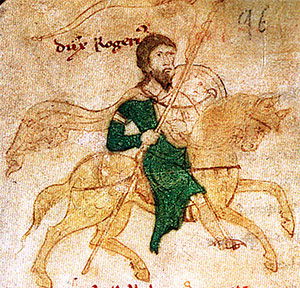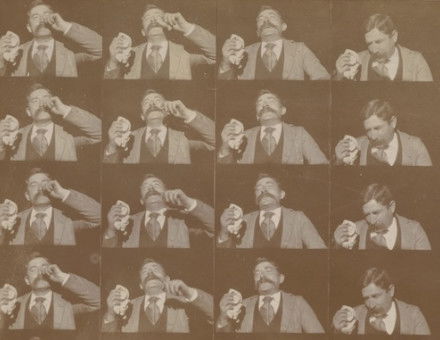The Death of Roger II of Sicily
The King of Sicily died on February 26th, 1154.

The nephew of Robert Guiscard and son of Count Roger I of Sicily, Roger II succeeded to Sicily at the age of nine in 1105 and took personal control in 1112, when he was sixteen. Subduing all opposition, he ruled it until his death in Palermo at the age of fifty-eight and it was said of him that he accomplished more in his sleep than other people did when awake. He was brought up by Greek and Muslim tutors and secretaries in an island populated by Arabs and Greeks, and he emerged with a subtler, more sophisticated cast to his character than his hard-bitten, rough-and-ready Norman ancestors. He allied shrewd diplomacy to aggression and in the 1120s he completely outmaneouvred his Hauteville cousins and took over Apulia and Calabria in Southern Italy. He still lacked a royal title and when the papacy was disputed between Innocent II and Anacletus II in 1130, Roger supported the latter in return for a coronation on Christmas Day in Palermo cathedral. Anacletus died in 1138 and Roger defeated Innocent II’s army the following year, took Innocent prisoner and forced the pope to confirm his position as King of Sicily and overlord of Southern Italy. In a mosaic in a Palermo church Roger had himself depicted like a Byzantine emperor, being crowned by Christ.
Roger built and beautified churches, but most of his Sicilian subjects were Muslims and he was tolerant in religious and intellectual matters. Whether out of genuine feeling, or as a tactical device against Rome, he flirted with Greek Orthodoxy. He lived in deliberately ostentatious magnificence, while counting every penny spent, and created an efficient civil service and an effective navy, which he used to take over North Africa between Tunis and Tripoli, seize Malta and Corfu, harry the coasts of Greece and abduct numerous women silk workers from Thebes to staff his court silk factory. He steered clear of crusading, but in 1149 his ships sailed up the Bosphorus and fired arrows impertinently into the Byzantine Emperor’s garden.
Known for his intellectual curiosity and his regard for learning, Roger spent the last years of his life in Palermo, presiding over Europe’s most glittering court among scholars from both the West and the Arab world. He loved to talk about everything under the sun with philosophers and mathematicians, doctors and geographers, in French or Latin, Arabic or Greek, and he put an Arab scholar and friend in charge of a commission which for fifteen years collected and sifted information to assemble all available knowledge about the physical world. The result, The Book of Roger, has been described by John Julius Norwich as ‘the greatest geographical work of the Middle Ages’. It starts by saying that ‘The earth is round like a sphere…’ According to one chronicler, Roger’s years of overwork and his enthusiasm for the pleasures of the flesh made him prematurely senile and he died of exhaustion. Another put his demise down to a heart attack. He was buried in Palermo cathedral in a handsome porphyry tomb, dressed in Byzantine imperial style in his royal robes and crowned with a tiara hung with pearl pendants. His third and last wife bore him a posthumous daughter Constance, who married the Emperor Henry VI, which would bring Sicily into the Holy Roman Empire.




